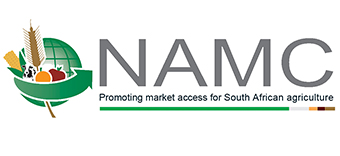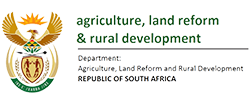Market Access Perspective – CEO’s Views

Officially inaugurated on 7 January 1997, the National Agricultural Marketing Council (NAMC) was established in terms of the Marketing of Agricultural Products (MAP) Act assented to by the head of state the previous year – on 2 October 1996 to be precise – to set in motion a new era of agricultural market deregulation in South Africa. Its predecessor, the National Marketing Council (NMC) had been established to administer the Marketing Act of 1937, a piece of legislation that Groenewald (2000)[1] refers to as “one of the most controversial pieces of economic legislation in the history of South African agriculture.” The 1937 Act, which conferred to the Minister of Agriculture powers to intervene in agricultural marketing, later morphed into the Marketing Act of 1968, following a series of amendments. The 1968 Act itself was amended a number of times during the 1970s and 1980s to entrench strict regulation of agricultural markets. According to Vink (2012)[2], the net effect of the Marketing Acts of 1937 and 1968, together with other pre-democracy landmark legislation such as the Land Acts of 1913 and 1936, was “to cut out competition for the market from black farmers and to ensure supply of cheap labour to the mines and the commercial farms”, leaving “a legacy of distorted spatial patterns across regions and within communities, and of a dysfunctional agriculture that still characterises rural South Africa.”[3]
The present day NAMC is charged with managing strategic interventions and advising on policy in the context of the now deregulated agricultural marketing environment. Among other things, Section 9 of the MAP Act of 1996 specifically mandates the NAMC to advise the Minister of Agriculture on agricultural marketing policy and its application, in the context of “national economic, social, and development policies and international trends and developments”. This is an immense task. It presupposes that the Organisation should possess human capital capable of generating not only agricultural marketing knowledge but broader socio-economic intelligence using the most rigorous and scientific methods available. Such intelligence should be of such relevance that it is useful for policy making and agribusiness decision making. The provisions of the 1996 MAP Act also implicitly charge the NAMC with a unique role of being a neutral and objective “bridge” between policy makers and the farming and agribusiness community at large. The demands afforded to the NAMC by its founding legislation put the Organisation in a privileged but critical position in the country’s agriculture landscape.
During the past two decades of its existence, the NAMC has largely established itself as a respected institution by all its stakeholders. Like any organisation, it has also experienced its fair share of setbacks. What becomes important is for those shortcomings to be dealt with seriously and to swiftly and courageously correct course. This is what the current five-year (2020/21 – 2024/25) organisational strategy seeks to do. It brings a sharper focus on the legislative mandate of advising the shareholder Minister and contributing meaningfully in the agricultural marketing policy making space in an objective and evidence-based manner.
As part of better engagement with its stakeholder base and maintaining focus on its core mandate, the NAMC, on a regular basis, will communicate progress on the implementation of its five-year strategy. Driven by its broad vision: “strategic positioning of agriculture in a dynamic global market”, the NAMC seeks to contribute towards achievement of two key outcomes namely, (1) an enabling agricultural marketing policy and statutory environment and, (2) agriculture as a viable, inclusive and competitive key economic sector”.
With Vink’s analysis (quoted above) in mind, fittingly, the Organisation is privileged to be appointed as the coordinator of the Agriculture and Agroprocessing Master Plan (AAMP) – a document that will become a strategic blueprint towards ensuring a growing, competitive, sustainable and inclusive agricultural economy. A crucial part of coordinating the AAMP is managing stakeholder partnerships in the crafting of a mutually accepted document and also the monitoring and evaluation of interventions post sign-off. A real and meaningful partnership between all stakeholders in the sector will be a prerequisite for successful crafting and implementation of the AAMP. The stakeholders in this case are Labour, Civil Society, Business (both established and small/emerging) and Government which are supposed to eventually agree on and take ownership of a social compact for the sector as well as its implementation.
An important function of the NAMC is the monitoring of the performance of Agricultural Industry Trust assets. With a total value of over R2.3 billion in 2019 (a decline of R132.1 million due to unfavourable financial market dynamics), these 11 trusts constitute the assets that were transferred from the erstwhile agricultural control boards. With obvious limitations in terms of what can be achieved with the meagre returns on investment generated from the Trust assets it becomes important that investment decisions are prudent and annual expenditures on key industry functions are well thought through. The NAMC’s role is to ensure that the Minister’s interests are well represented in the Trusts through Ministerial Trustees. In addition to the funding of essential industry functions such as market information, research and broadening of market access, some of the expenditure by Trusts goes towards the funding of transformation activities in the sector. Together with funding from statutory levies – a legislated mechanism for collection of funds from industry players – trust funds are an important instrument for ensuring a growing, competitive and inclusive sector. However, there is significant room for better integration of these industry funding instruments with those of government, which are themselves not optimally integrated. It is envisaged that through the AAMP, there will be better coordination of funding of transformation as well as other essential sector functions.
Pertaining to the advancement of transformation in the sector, it is encouraging to look back at the great strides that have been made by the National Red Meat Development Programme (NRMDP) – a programme implemented by the NAMC and funded by the Department of Agriculture, Land Reform and Rural Development (DALRRD). The programme promotes commercialisation and market access mainly for communal livestock farmers. So far this financial year, the NRMDP has supported an offtake of 751 communal cattle from the Eastern Cape and KwaZulu-Natal. For the first time in the history of the programme, 65 cattle were sold through the export market (Mauritius). In total, NRMDP local and export sales injected an income of over R5.5 million between April and August 2020 in these poor rural communities.
Currently implemented in three provinces (Eastern Cape, KwaZulu-Natal and North-West), the NRMDP will, through the AAMP, now be expanded into the rest of the country under the coordination of the Agricultural Research Council (ARC). In its upscaled format, it will be integrated with current livestock development programmes such as the ARC-led Kaonafatso Ya Dikgomo (KyD). The expanded NRMDP is set to become a template for transformation and will be a partnership between DALRRD and its entities as well as private sector players. Similar initiatives or schemes in other value chains will kick off on the basis of the AAMP.
A crucial part of monitoring the implementation of the AAMP and its schemes is the availability of quality and reliable data. Data on the black farming community is a challenge which requires concerted effort to tackle. Discussions around the AAMP platform so far have flagged this matter and it is envisaged that a clear solution will be formulated in this regard. As part of contributing towards filling the data gap, the NAMC is releasing a series of baseline survey results on the status of market participation of black farmers in various agri-value chains. So far, results on the citrus and broiler industries have been released based on data collected using a tool called the Smallholder Market Access Tracker (SMAT) that was developed by the NAMC under the guidance of a reference group of experts from academia, government, business and banking. These surveys, together with data mined from industries as part of the AAMP, reveal that there is still a long way to go in affording market access to black farmers in particular.
As we forge ahead to implement our five-year strategic plan, we are mindful of challenges that remain, including the restrictions brought about by the COVID-19 pandemic. Despite these restrictions we have adapted and have been able to achieve our short-term deliverables so far in the first quarter of the 2020/21 financial year. For instance, an unprecedented 27 statutory measure investigations were conducted by the NAMC during this quarter. We will continue to find ways to deliver on our mandate even under these abnormal COVID-19-wrought conditions. Some of our small farmer training programmes are already taking place virtually. So far this financial year a total of 20 youth farmers in Mpumalanga were trained using a virtual platform in collaboration with Buhle Farmers Academy and the Mpumalanga Department of Agriculture, Rural Development, Land and Environmental Affairs.
The NAMC works closely with the Food, Agriculture and Natural Resources Policy Analysis Network (FANRPAN) as its South Africa node coordinator. FANRPAN recently announced the appointment of Dr. Tshilidzi Madzivhandila as the Head of Mission and Chief Executive Officer. The NAMC wishes to congratulate Dr Mazhivhandila for his appointment and we are looking forward to good working relations with FANRPAN as a Pan African Civil Society Organisation.
Congratulations to the following colleagues for having been appointed to represent the Minister in the Citrus Industry Trust:
- Dr Hlami Ngwenya,
- Ms Hilda Lefopane, and
- Ms Fhatuwani Thovhogi
The process of appointment of Ministerial Trustees in the Deciduous Fruit Industry Development Trust, Sorghum Trust and Maize Trust is underway following the Council’s recommendations to the Minister. Two advertisements were sent out to the public indicating vacancies in the Winter Cereal Trust and the Meat Industry Trust.
The NAMC Council is appreciated for providing a conducive environment to the staff to ensure effective delivery of the Organisation’s commitments. In the next series of articles, I will provide commentary on current issues and developments relevant to the NAMC’s mandate in bid to create a clearer appreciation of the role of the NAMC in the sector and to constructively interact with our stakeholders.
[1] Groenewald JA (2000). The Agricultural Marketing Act: A Post-Mortem. South African Journal of Economics, 66 (3): 161-251.
[2] Vink N (2012). The Long-term Economic Consequences of Agricultural Marketing Legislation in South Africa. South African Journal of Economics, 80 (4): 553-566.
[3] Vink concludes that the long-term consequences of agricultural marketing legislation include concentration in the agro-food sector, inefficient allocation of transport and storage infrastructure increase in informal sales (notably in the red meat industry), and most importantly the neglect of market access for black farmers.

